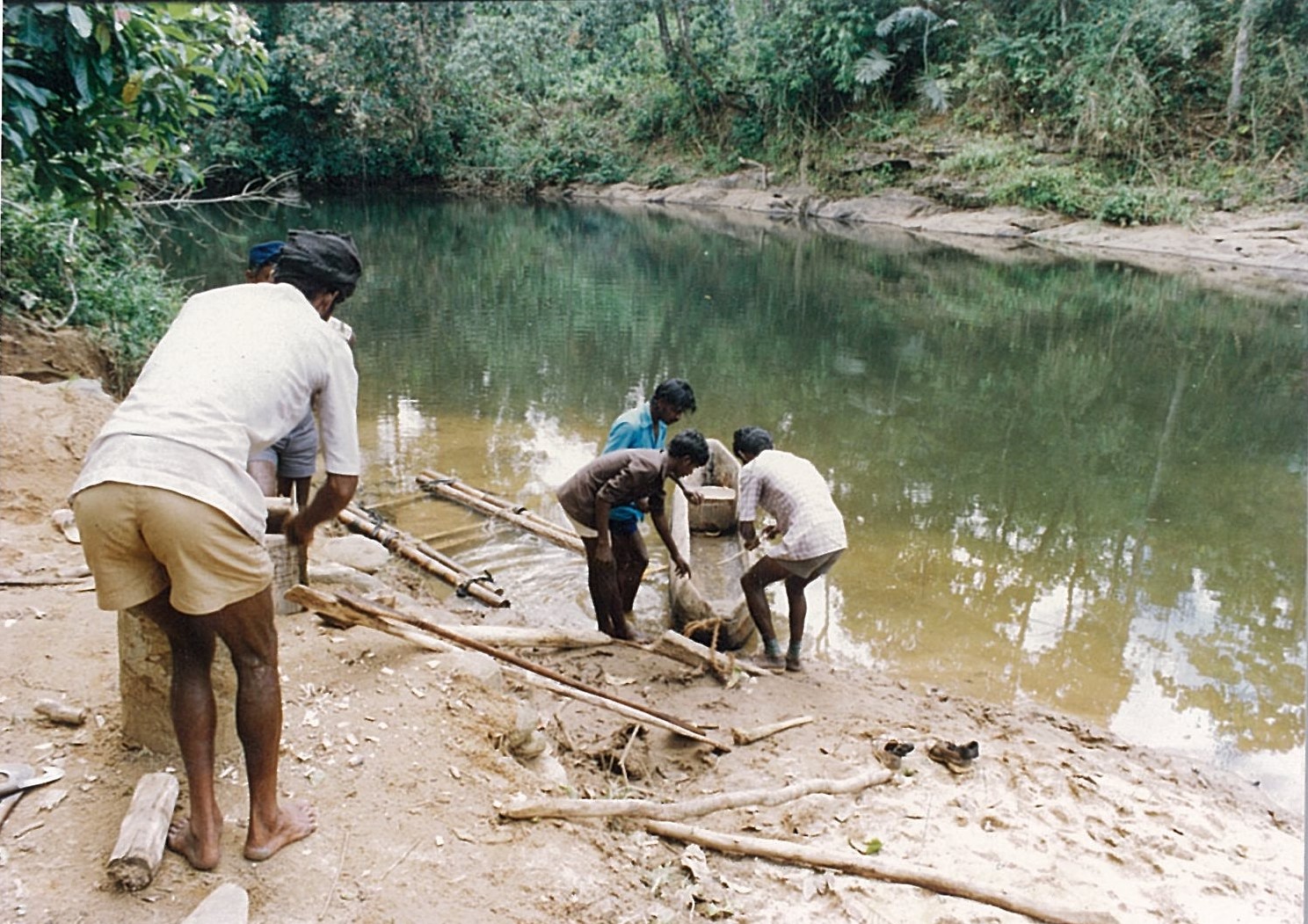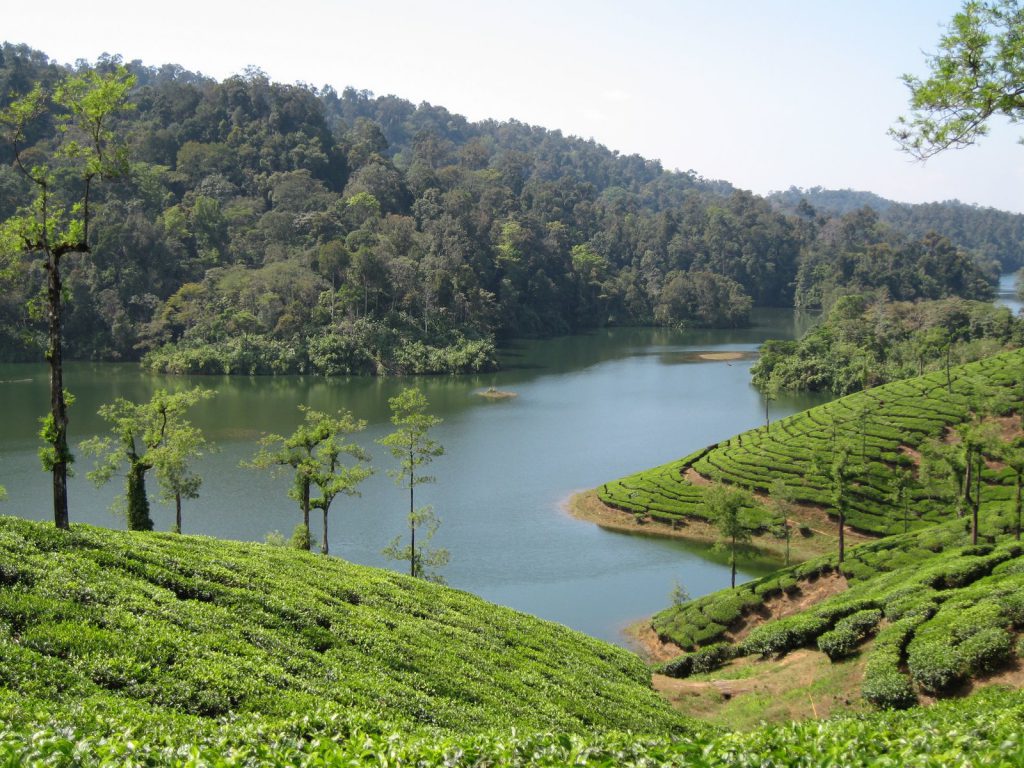I started working in India in the Anamallai Hills, part of the Western Ghats as they tapered down all the way into the tip of the subcontinent. Before that I had worked for five years in bauxite mining in Guyana, South America and lived on the bank of Rio Berbice, in the middle of the Amazonian rain forest. But that is another story.
The area that contained the tea plantations was part of the Indira Gandhi National Park. The park is home to an amazing variety of wildlife which thanks to the difficult terrain, plethora of leeches, and shortage of motorable roads is still safe from the depredations of ‘brave’ hunters buzzing around in their Jeeps and shooting animals blinded and frozen in their searchlight beams. In the Anamallais if you want to hunt (it is illegal to shoot anything in the National Park, but there are those who are not bothered about what is legal and what is not) you must be prepared to walk in the forest, up and down some very steep hills, be bitten by leeches and have a very good chance at becoming history at the feet of an elephant.
However, if you are not interested in hunting and killing animals, you have all the same pleasures and thrills with the animal healthy and alive at the end of it. I want to see and photograph animals, not kill them. I was looking for an opportunity to just spend time in the environment that I loved. My job as an Assistant Manager in Sheikalmudi Estate, my first posting with a princely salary of ₹850 per month, gave me all that I could have wished for.
Sheikalmudi borders the Parambikulam forest. This extends from the shore of the Parambikulam Reservoir (created by damming the Parambikulam River) up the steep mountainside all the way to the top. Sheikalmudi is the crown on that mountain’s head, manicured tea planted after cutting the rain forest, more than a century ago by British colonial planters. Where the tea ends, starts the rain forest of the Western Ghats. Anamallais is the second rainiest place on the planet. In the early part of the century it used to get more than three-hundred centimeters of rain annually and consequently it rained almost six months of the year. Even when I joined in 1983, we frequently saw spells of more than a week at a stretch, when it rained continuously day and night without any easing of the volume of water. I was horrified the first time I saw this. I was used to rain in Hyderabad, where we get about thirty centimeters annually.
Now here was rain and more rain and more rain. Yet in all this rain, we went to work at 6.00 am every morning. Heavy canvas raincoat, waterproof jungle hat, shorts, stockings and wellingtons. We rode our motorcycles down treacherous hill pathways, slippery in the rain and covered with fog as sometimes a cloud decided to rest on its journey across the sky. It was very cold because we were between 3500 to 4000 feet high and so in the first ten minutes, you lost all feeling in your legs, below your knees.
Walls of the bungalow would have mildew growing on them in damp patches. Small leaks would develop in the roof and their yield would be received in sundry pots and pans placed under them. This would create its own music. Little frogs would emerge from every crevice and would hop all around the house. In the night, they would find some resting place and add their voices to the night chorus of frogs and insects in the garden, that would rise and fall like an animal breathing. But sometimes the rain would be so heavy that all you could hear was the rain on the galvanized iron sheet roof. This sound would drown out every other sound. Within the first week of the beginning of the monsoon, all telephone lines would be down. Power supply would become extremely erratic. And more often than not, landslides would block roads. So being cut off from everyone for several days was a common phenomenon. When there came the occasional storm – every year we used to have at least two or three – all these problems would get magnified.
Candlelight dinners with a roaring fire in the fireplace were the fringe benefit of this weather. That and in my case, a lot of chess by the fire. The year I got married, 1985, there was a storm in which twelve-hundred trees fell on my estate alone, taking down with them all power and telephone lines. There were two major landslides and we were cut off from the world for a total of fifteen days. It rained almost continuously for this period and my poor wife had a wet introduction to the new life ahead of her. But typical for us both, we enjoyed this time, playing chess by the fireside. She started by not knowing chess at all and I taught her the game. By the end of our enforced seclusion she was beating me. Now take it as her learning ability or the quality of my game but being rained-in has its benefits.
1983-86 were boom years for tea in South India. Anything that was produced would sell. The biggest buyers were the Russians who bought on the rupee trade agreements between the governments of both countries. Anything that could be manufactured in South India was bought by the Russians. Sadly, quality went out the window. Some people, including myself, were able to see the writing on the wall and tried to get manufacturers to focus on quality and to get out of the commodity market and instead create brand. That, however, meant investing in brand building and hard work in maintaining quality standards. Since people were making money, nobody was interested in listening to anything that meant more work or investment. Eventually, the inevitable happened. Russia collapsed and so did their buying trend and it almost took the South Indian tea industry down with it. Some companies shut down. Others were more fortunate. But the whole industry faced some very hard times.

Life in the Anamallais passed like a dream. Berty Suares was the Assistant Manager on the neighboring estate, Malakiparai. And Sandy (Sundeep Singh) was on Uralikal. Both dear friends. They would come over to my place and we would spend Sunday picnicking on the bank of the Sholayar River where on a bend in the river that passed through our cardamom plantation, I had built a natural swimming pool. I deepened the stream bed and deposited the sand from there on the near bank, thereby creating a very neat ‘beach.’ Sitting on this beach under the deep shade of the trees after a swim in the pool was a heavenly experience. Add to it, eating cardamom flavored honey straight from the comb, taken from the many hives that I had set up in the cardamom fields for pollination. The flavor comes from the pollen of the flowers which the bees take to make the honey. Depending on where you set up your hives or where the bees go to find pollen, honey can have as many flavors as there are flowers. While we lazed about at noon, our lunch would be brought down to us and we would all eat together. The joys of being a planter in the days when we had people who knew how to enjoy that life.

If you walked down the river for a couple of kilometers you would come to the Parambikulam Dam backwaters into which this river flowed. I had built another pool there at the bottom of a waterfall, thanks to a stream that flowed through Murugalli Estate. We used to keep a boat in the dam to go fishing on the lake. There was a thickly wooded island in the lake about half a kilometer from the shore on which one could go and spend the whole day, swimming and lazing in the shade; a very welcome occupation, free from all stress. The only sounds that you would hear would be the wailing call of the Rufus Backed Hawk Eagle and the Fishing Eagle. In the evenings, Jungle Fowl called the hour. If you stayed beyond sunset, the only danger was that you could encounter bison (Gaur) as you walked home. That encounter was not something to look forward to as I discovered one day. Mercifully, I was walking softly and the wind was in my face, so the Gaur was as startled as I was. He snorted, spun on his heels, and vanished, crashing through the undergrowth. I was very fortunate.
The more time I spent with myself, the clearer it became that it is important to be ‘friends’ with yourself. The more you are self-aware and comfortable internally, the more you can enjoy the world outside. When you are not aware of what is happening to you inside or are unhappy with decisions you have taken, or with your own internal processes, the unhappier you are likely to be with your surroundings. The normal tendency is to blame the outer world, but if one looks within, it is possible to find the solution. One rider however, that you will find only if you seek and only if you have the courage to recognize what you see. That is where sometimes the matter remains unresolved. Not because there is no solution. But because we are unwilling to accept the solution or to implement it.
Time for another dip, then climb into the hammock and gently swing in the breeze that comes blowing over the water. Those were the days……………………
Being a planter in the estates upto the late 90s required a different kind of person and mindset. People needed to be complete and comfortable in themselves. Love for the outdoors and nature was a must, especially, as most of the day was spent in the open, often in physically demanding conditions. Turnover of assistant managers was very high as many saw only the bungalows and perks and joined. Only to realise that these came at a price. Another very important, probably the most important trait, required was a strong moral character. Though the majority of the people you were… Read more »
Very well stated Karan. We saw the results of those who measured up and those who didn’t.